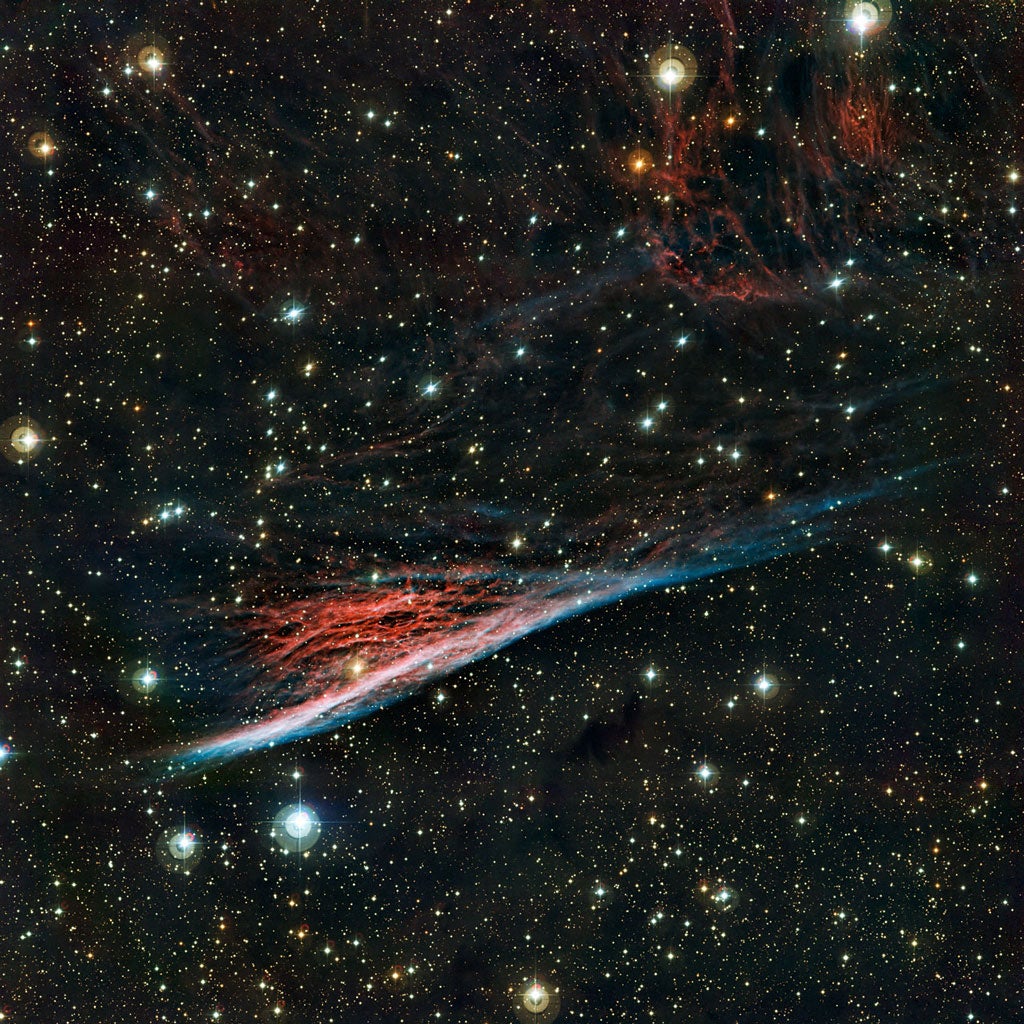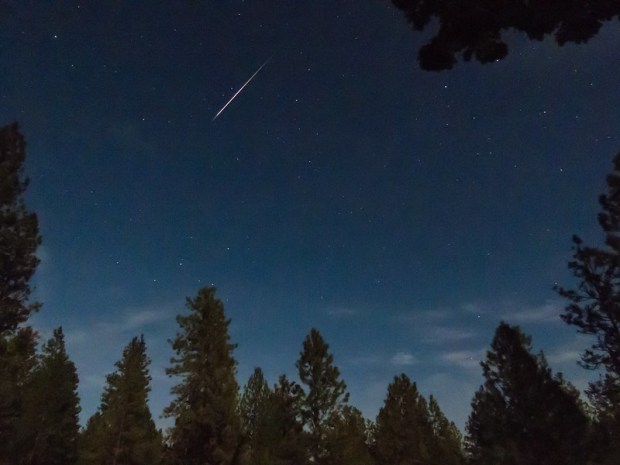Despite the tranquil and apparently unchanging beauty of a starry night, the universe is far from being a quiet place. Stars are being born and dying in an endless cycle, and sometimes the death of a star can create a vista of unequalled beauty as material is blasted out into space to form strange structures in the sky.
This new image from the Wide Field Imager shows the Pencil Nebula against a rich starry background. This oddly shaped cloud, which is also known as NGC 2736, is a small part of a supernova remnant in the southern constellation of Vela the Sails. The brightest part resembles a pencil — hence the name — but the whole structure looks rather more like a traditional witch’s broom.
The Vela supernova remnant is an expanding shell of gas that originated from the supernova explosion. Initially, the shock wave was moving at millions of kilometers per hour, but as it expanded through space, it ploughed through the gas between the stars, which has slowed it considerably and created strangely shaped folds of nebulosity. The Pencil Nebula is the brightest part of this huge shell.
This new image shows large, wispy filamentary structures, smaller bright knots of gas, and patches of diffuse gas. The nebula’s luminous appearance comes from dense gas regions that have been struck by the supernova shock wave. As the shock wave travels through space, it rams into the interstellar material. At first, the gas was heated to millions of degrees, but it then subsequently cooled down and is still giving off the faint glow that was captured in the new image.
By looking at the different colors of the nebula, astronomers have been able to map the temperature of the gas. Some regions are still so hot that the emission is dominated by ionized oxygen atoms, which glow blue in the picture. Other cooler regions are seen glowing red, due to emission from hydrogen.
The Pencil Nebula measures about 0.75 light-year across and is moving through the interstellar medium at about 400,000 mph (650,000 km/h). Remarkably, even at its distance of approximately 800 light-years from Earth, this means that it will noticeably change its position relative to the background stars within a human lifetime. Even after 11,000 years, the supernova explosion is still changing the face of the night sky.










